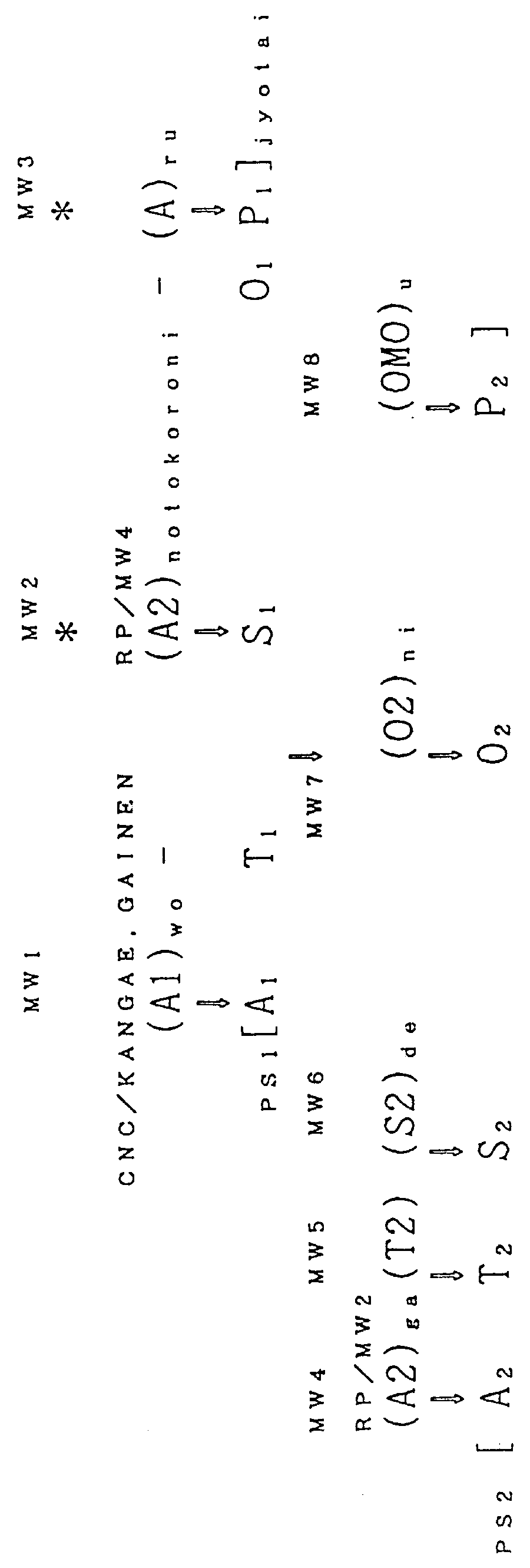Natural language processing method for converting a first natural language into a second natural language using data structures
a processing method and natural language technology, applied in the field of natural language processing methods, to achieve the effect of improving processing speed, easy to understand the language structure, and simplifying programming
- Summary
- Abstract
- Description
- Claims
- Application Information
AI Technical Summary
Benefits of technology
Problems solved by technology
Method used
Image
Examples
case p
of the root PS in FIG. 53 is (can) and Case O.sub.6 is (). Case P.sub.6 can be changed to (is) or (a)ru, while Case O.sub.6 can be changed to (able) or (kano)de, for the same reasons that apply to the process used for a Japanese sentence. FIG. 54 shows the structural sentence after the above-mentioned chan ges have been made. If a natural sentence is g ene rat ed from that structural sentence, it will be as shown below.
[(Taro)(is)(able[([(Taro)to(give)s([(Hanako)(have)([(book)s(is) from(Taro)through(sh)to(Hanako))])at(school)(today))at(sch ool)(today)])(is)(possible)])at(school)(today)]
If words whose expression is prohibited, as well as paren theses and square brackets, are removed from the above sentence, it will be as shown below.
Here, when the structural sentence on the top level is insert ed i nto PS3, "to" is added before P3 and entered as "to (give)"; however, if "can" comes before "to(give)", "to" is omitted.
If all the spaces are removed from th e above sentence, the foll owi...
PUM
 Login to View More
Login to View More Abstract
Description
Claims
Application Information
 Login to View More
Login to View More - R&D
- Intellectual Property
- Life Sciences
- Materials
- Tech Scout
- Unparalleled Data Quality
- Higher Quality Content
- 60% Fewer Hallucinations
Browse by: Latest US Patents, China's latest patents, Technical Efficacy Thesaurus, Application Domain, Technology Topic, Popular Technical Reports.
© 2025 PatSnap. All rights reserved.Legal|Privacy policy|Modern Slavery Act Transparency Statement|Sitemap|About US| Contact US: help@patsnap.com



